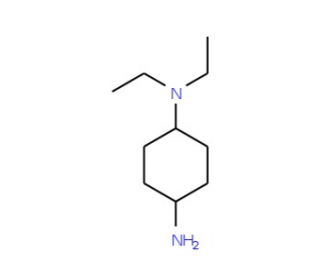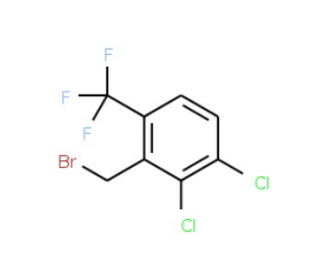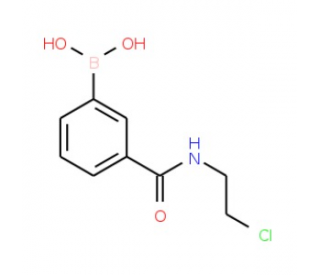详细说明
Species Reactivity
Human
Specificity
Detects human EphB4 in direct ELISAs and Western blots. In direct ELISAs and Western blots, no cross-reactivity with recombinant human EphA1, A2, A5, A6, A10, B2, B3, B6, recombinant mouse EphA3, A4, or recombinant rat EphB1 is observed.
Source
Monoclonal Rat IgG 1 Clone # 395810
Purification
Protein A or G purified from hybridoma culture supernatant
Immunogen
Mouse myeloma cell line NS0-derived recombinant human EphB4
Ala16-Ala539
Accession # AAH52804Formulation
Supplied in a saline solution containing BSA and Sodium Azide.
Label
Alexa Fluor 700
Applications
Recommended
ConcentrationSample
Flow Cytometry
5 µL/10 6 cells
See below
Please Note: Optimal dilutions should be determined by each laboratory for each application. are available in the Technical Information section on our website.
Data Examples
Flow Cytometry | Detection of EphB4 in MCF‑7 Human Cell Line by Flow Cytometry. MCF‑7 human breast cancer cell line was stained with Rat Anti-Human EphB4 Alexa Fluor® 700‑conjugated Monoclonal Antibody (Catalog # FAB3038N, filled histogram) or isotype control antibody (Catalog # , open histogram). View our protocol for . |
Preparation and Storage
Shipping
The product is shipped with polar packs. Upon receipt, store it immediately at the temperature recommended below.
Stability & Storage
Protect from light. Do not freeze.
12 months from date of receipt, 2 to 8 °C as supplied.
Background: EphB4
EphB4, also known as Htk, Myk1, Tyro11, and Mdk2, is a member of the Eph receptor tyrosine kinase family and binds Ephrin-B2. The A and B class Eph proteins have a common structural organization (1‑4). The human EphB4 cDNA encodes a 987 amino acid precursor that includes a 15 amino acid (aa) signal sequence, a 524 aa extracellular domain (ECD), a 21 aa transmembrane segment, and a 427 aa cytoplasmic domain (5). The ECD contains an N-terminal globular domain, a cysteine‑rich domain, and two fibronectin type III domains. The cytoplasmic domain contains a juxtamembrane motif with two tyrosine residues which are the major autophosphorylation sites, a kinase domain, and a conserved sterile alpha motif (SAM) (5). Activation of kinase activity occurs after membrane-bound or clustered ligand recognition and binding. The ECD of human EphB4 shares 89% aa sequence identity with mouse EphB4 and 42‑45% aa sequence identity with human EphB1, 2, and 3. EphB4 is expressed preferentially on venous endothelial cells (EC) and inhibits cell-cell adhesion, chemotaxis, and angiogenesis. Opposing effects are induced by signaling through Ephrin-B2 expressed on arterial EC: adhesion, endothelial cell migration, and vessel sprouting (6). EphB4 singaling contributes to new vascularization by guiding venous EC away from Ephrin-B2 expressing EC. Ephrin-B2 signaling induces arterial EC to migrate towards nascent EphB4 expressing vessels (6). The combination of forward signaling through EphB4 and reverse signaling through Ephrin-B2 promotes in vivo mammary tumor growth and tumor‑associated angiogenesis (7). EphB4 promotes the differentiation of megakaryocytic and erythroid progenitors but not granulocytic or monocytic progenitors (8, 9).
References:
Poliakov, A. et al. (2004) Dev. Cell 7:465.
Surawska, H. et al. (2004) Cytokine Growth Factor Rev. 15:419.
Pasquale, E.B. (2005) Nat. Rev. Mol. Cell Biol. 6:462.
Davy, A. and P. Soriano (2005) Dev. Dyn. 232:1.
Bennett, B.D. et al. (1994) J. Biol. Chem. 269:14211.
Fuller, T. et al. (2003) J. Cell Sci. 116:2461.
Noren, N.K. et al. (2004) Proc. Natl. Acad. Sci. 101:5583.
Wang, Z. et al. (2002) Blood 99:2740.
Inada, T. et al. (1997) Blood 89:2757.
Long Name:
Eph Receptor B4
Entrez Gene IDs:
2050 (Human); 13846 (Mouse)
Alternate Names:
EC 2.7.10; EC 2.7.10.1; EPH receptor B4; EphB4; ephrin type-B receptor 4; hepatoma transmembrane kinase; Htk; HTKephrin receptor EphB4; Mdk2; Myk1; soluble EPHB4 variant 1; soluble EPHB4 variant 2; soluble EPHB4 variant 3; Tyro11; Tyrosine-protein kinase receptor HTK; Tyrosine-protein kinase TYRO11










 粤公网安备44196802000105号
粤公网安备44196802000105号